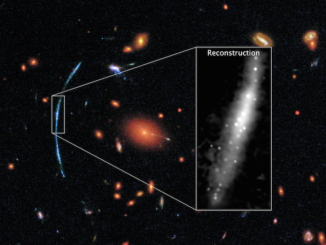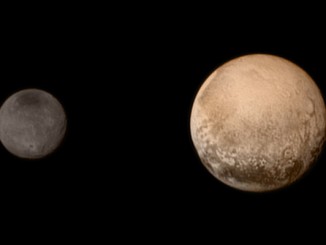The James Webb Space Telescope recently turned its infrared eye on the Crab Nebula to learn more about the supernova that created the billowing structure. The explosion was first observed in China in 1054 and the cloud of gas and debris left behind was first seen in 1731. At the center of the image, the Crab’s remnant pulsar, spinning at 30 times per second, can be seen as a brilliant white dot surrounded by compact rings of dust and gas. Webb used its Near-Infrared Camera (NIRCam) and its Mid-Infrared Instrument (MIRI) to produce this striking image.




